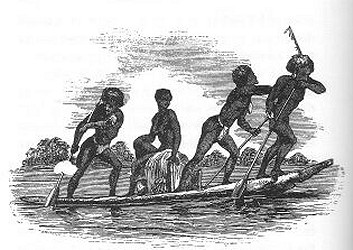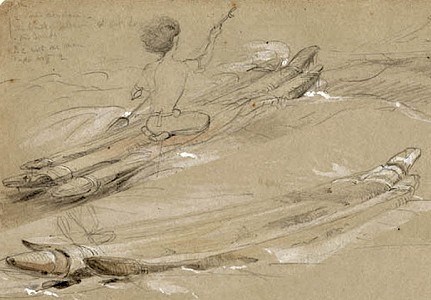
surfresearch.com.au
mcgillvray and brierly : catamarans, new guinea, 1902
mcgillvray and brierly : catamarans, new guinea, 1902
|
|
|
|
|
|
 |
surfresearch.com.au
mcgillvray and brierly : catamarans, new guinea, 1902 |
Page
BRUMER ISLAND
August 17th.
| 1850 Catamaran and Riders, Bruinie [Brumer] Island, New Guinea. - McGillvray: Voyage of H.M.S. Rattlesnake, London, 1852, Volume 1, page 12. |
 |
| 1850 Catamaran and Rider, Bruinie [Brumer] Island, New Guinea, detail and adjusted.
The similarity with the Madras catamaran
is remarkable, except for the
sculptured prow used in New Guinea, and this three log
design provides the template for the rolled-bark
or reed canoe of Tasmania, see below.
[Oswald W.B. Brierly : New Guinea coast and Cape York area during the voyage of H.M.S. Rattlesnake, ca. 1849-1850] 9a. http://www.acmssearch.sl.nsw.gov.au/search/itemDetailPaged.cgi?itemID=421776 |
 |
|
|
|
|
|
|